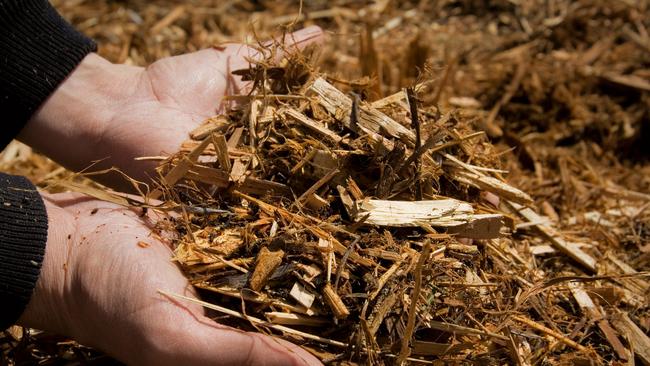10 ways you can save money in the back yard this spring and summer
There’s no need to spend a fortune to have your garden looking its best in the warmer months. Here are 10 blooming good tips to help your budget.

SmartDaily
Don't miss out on the headlines from SmartDaily. Followed categories will be added to My News.
As the warmer weather draws us into our back yards to relax or entertain, the desire to spend more on plants and landscaping grows.
But there’s no need to spend a fortune to have your garden looking its best. Here are 10 blooming good tips to help your budget.
1 USE SEEDS
You get great bang for your buck when you grow plants from seeds. You can get a lot more plants to start with, with some packets having about 100 seeds. They can be grown in trays and planting mix, or some can be sown directly in vegie patches.
To save even more, sprout seeds in egg cartons, newspaper rolled into cylinders or plastic cartons with holes punched in the bottom for water drainage to save buying trays.
2 TAKE CUTTINGS
Increase your garden stock at no cost by taking cuttings. Whole hedges of hydrangea, lavender, rosemary and lilac can be planted, as can rare heirloom roses and other shrubs, if you propagate them yourself. Get expert advice on propagating different varieties to ensure success.
3 DIVIDE PERENNIALS
Perennials come back every year and just get bigger and bigger. Over time some need to be divided to keep them healthy. This also means that you make more plants, which you can locate in other areas of your yard.

4 SHOP SALES AND BUY IN BULK
Search out group plant sales, usually abundant in spring, or search local community social media groups. At nurseries, there is often a corner set aside for seconds.
If you need to plant out a big area, buy in bulk as the cost per plant will be lower overall than if you purchased a few plants each week over a longer time.
5 USE RECYCLED ITEMS
Garage sales, thrift shops and the classified sections of newspapers and online shopping sites often have gardening paraphernalia – everything from used bricks to pots and old tools, at greatly reduced prices or free.
It’s also fun to forage for natural materials such as interesting stems or stones to make edging or bamboo poles for fences.
6 DOUBLE-DUTY PLANTS
Consider planting dual-purpose varieties such as blooms that attract pollinating insects, attractive foliage with medicinal properties, shrubs (such as rosemary) that you can eat, and leafy plants to provide privacy.
7 FREE OR LIVING MULCH
Save hundreds of dollars by accepting the “waste” from tree-cutting companies to mulch your garden. The bark chips can greatly reduce water evaporation and weeds. Another option is covering your soil with a green, living mulch.
Native Pennyroyal makes a great groundcover as it quickly covers bare soil, reduces evaporation, and can be used in cooking. Other options are creeping oregano and creeping Jenny (Lysimachia nummularia).

8 SAVE YOUR GRASS CLIPPINGS
Leave grass clippings on the lawn to reduce your fertiliser costs, or save them to use as mulch or compost. If you have bare patches on your lawn, use an aerating tool to dig small holes and push the grass clippings into them to help re-establish the lawn.
9 WATER WISELY
Over-watering plants can kill your landscaping and budget. To avoid death by water, know how much and when your greens need to drink. Sales tags should have directions.
Drip hoses are thrifty ways to water plants because the water goes directly to the roots. Wind drip hoses around tree basesand bottoms of shrubs, and put hoses on automatic timers.
10 GROW GIFTS
Gifting homegrown food, flowers or plants adds a personal touch and costs you nothing. Use the blooms, vegetables and cuttings from your garden and gift recipients will appreciate that your hard work, love and care has gone into their present.




